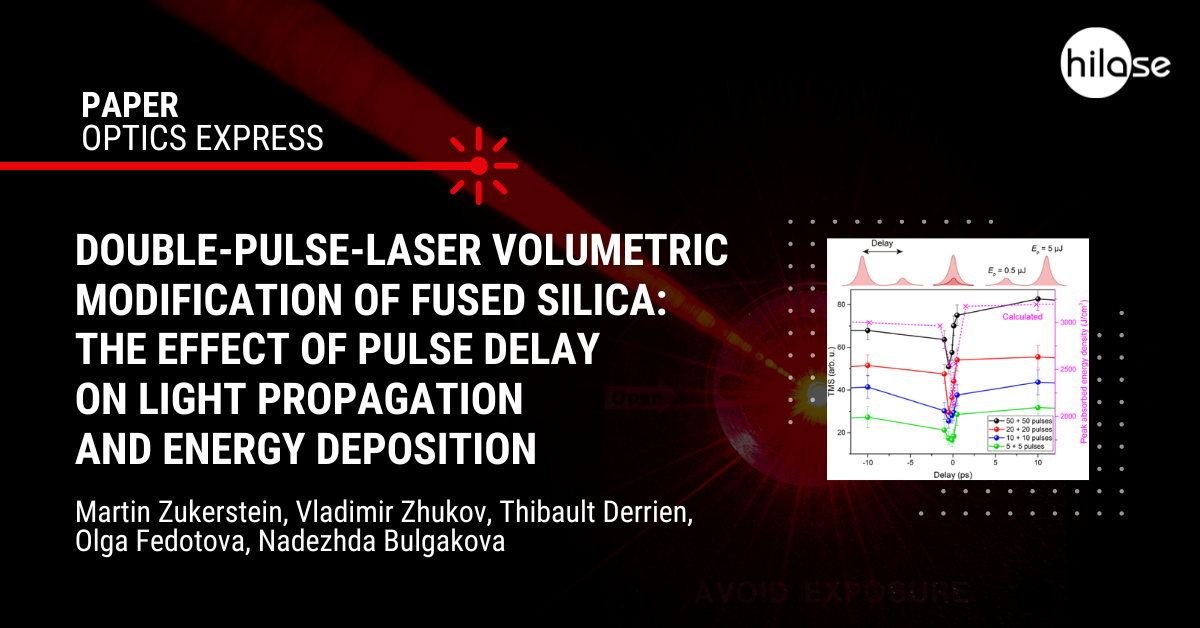Academic journal Optics Express recently published a paper titled Double-pulse-laser volumetric modification of fused silica: the effect of pulse delay on light propagation and energy deposition. The study was authored by several HiLASIANS from the Scientific Laser Applications department and brings results, which could be valuable in the area of direct laser writing of 3D structures in the material bulk.

Martin Zukerstein, Vladimir Zhukov, Thibault Derrien, and Nadezhda Bulgakova were joined in the research team by Olga Fedotova from the National Academy of Sciences of Belarus.
Volumetric modification of dielectrics by ultrashort laser pulses is a complex dynamic phenomenon involving material photoexcitation and associated nonlinear processes. To achieve control over modification, it is necessary to gain a deep insight into the dynamics of laser-excited processes that can be realized using double-laser-pulse experiments with different time separations supported by numerical simulations. In this paper, we apply this approach to investigate fused silica modification with femtosecond laser pulses that provides time-resolved information about the dynamic behavior of the laser-excited bandgap material. It is shown that the laser-generated free-electron plasma causes a shielding effect for the following pulse with a characteristic duration of ∼600 fs after the pulse action. Within this time interval, the second pulse produces a reduced modification as compared to a longer time separation between pulses. For double pulses with different energies, it was found that the volumetric modification is stronger when a lower-energy pulse couples with material first. This is explained by the combination of the effects of the re-excitation of self-trapped excitons, which are generated as a result of free electron recombination and associated light shielding. Experimental results are supported by numerical simulations of double laser pulse propagation in nonlinear media based on Maxwell’s equations. Our findings offer a route for better controlling the inscription of 3D photonic structures in bulk optical materials.
Read the FULL ARTICLE.








